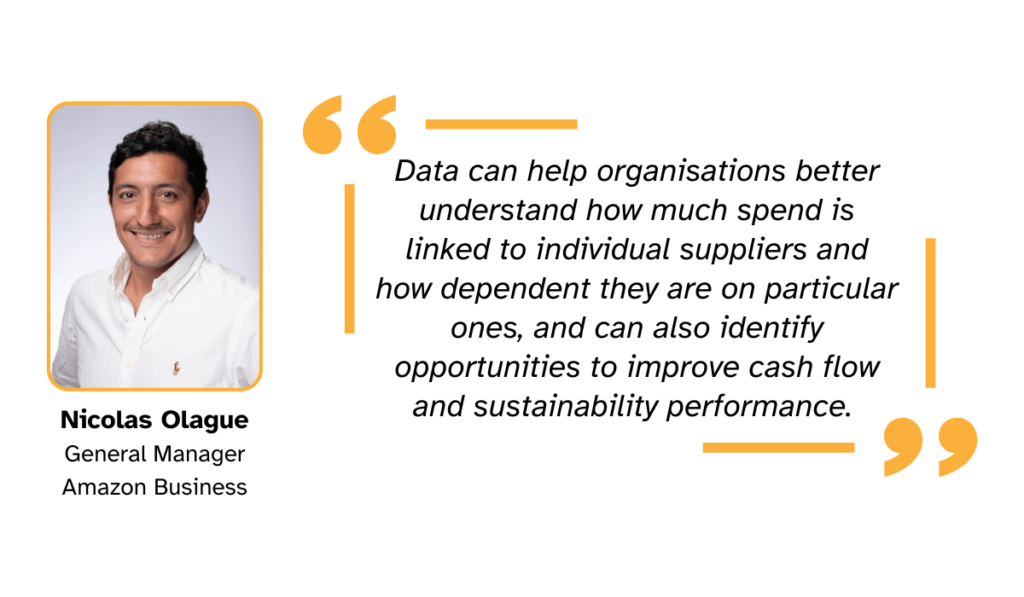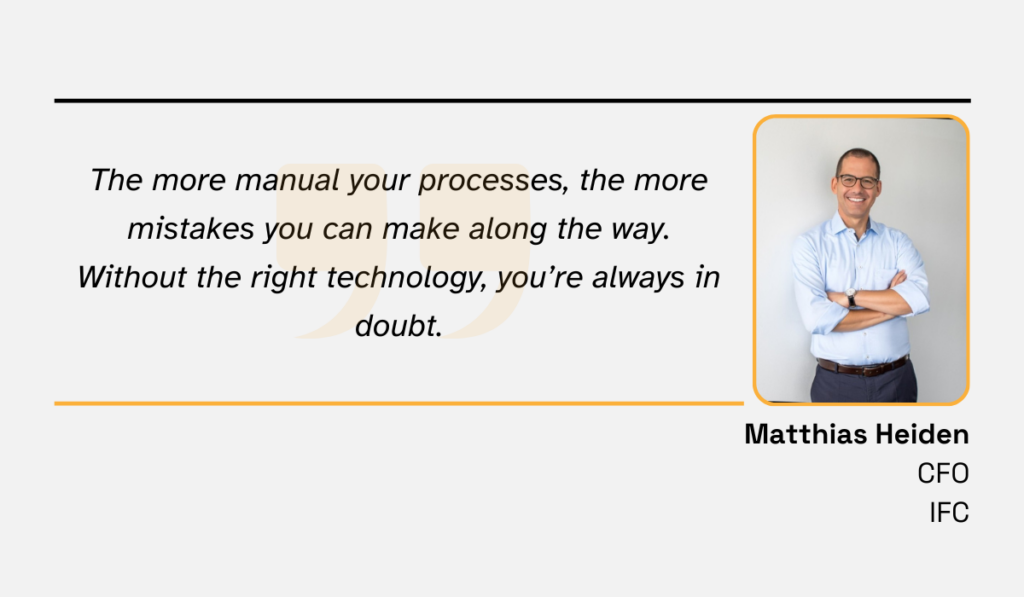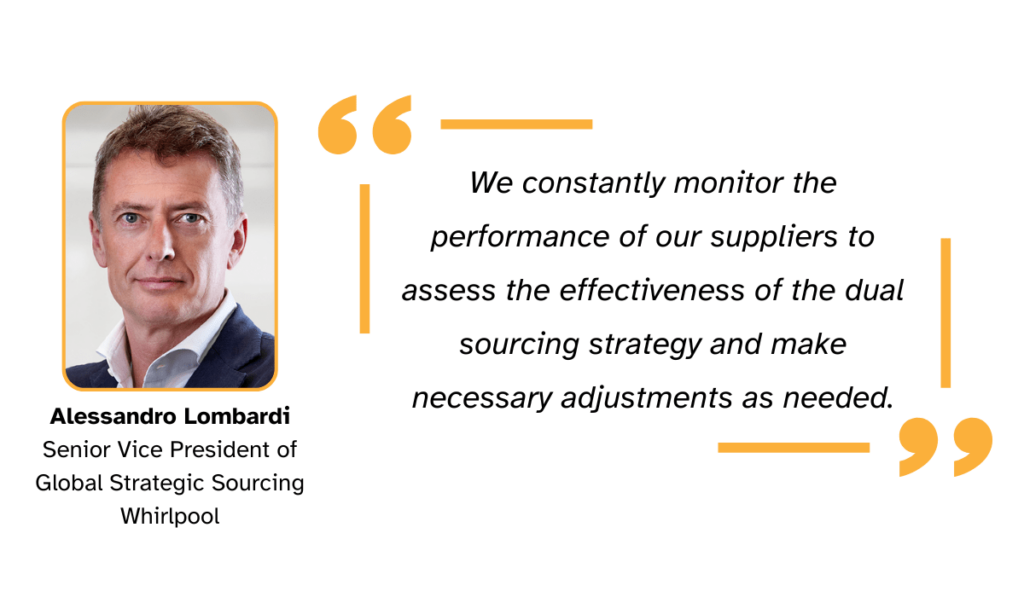6 Tips for Better Procurement Spend Analysis


There’s no doubt that effective procurement spend analysis is crucial for optimizing your company’s purchasing process, reducing costs, and even improving supplier relationships.
But only if you do it right.
If not, the process can backfire, leading to missed cost-saving opportunities and a negative impact on the bottom line.
Fortunately, you won’t have to worry about that after reading this article.
In it, we’ll share six tips that will transform your spend analysis into a strategic advantage.
Packed with actionable advice, expert insights, and real-life examples, this guide is bound to set you on your way to smarter procurement spend analysis.
The quality of your spend analysis is directly influenced by the timeliness of the data you use.
Why?
Because, when you rely on insights that are actually fresh, you get the clearest and the most up-to-date view of your spending.
And that means being able to catch opportunities for cost savings, instances of overspending, and suspicious activities, all in real-time.
In other words, spend analysis powered by fresh data shields you from all kinds of risks.
Nicolas Olague, General Manager at Amazon Business US, agrees that reliable data is key for making well-informed decisions in procurement.

Illustration: Veridion / Quote: Independent
Yes, data is king, no doubt about it. But only if it’s up to date.
So how do you keep it that way?
One thing you could do is automate your data refresh cycles.
Start by identifying all your spend data sources, both internal and external.

Source: Veridion
From there, you’ll want to set up integration points for these sources.
This can be done, for example, through the software’s own integration features that allow communication between various systems.
However, where native integration isn’t available, ETL (Extract, Transform, Load) tools can step in.
As the name suggests, these tools are built precisely to pull information from one system and upload it into another in order to help you maintain a complete, current, and accurate database.

Source: Veridion
Just make sure the tool you choose has all the capabilities necessary to ensure the best data quality.
For instance, it should support scheduling as well as error handling, and connect seamlessly with all the data sources and destinations you use.
And don’t forget about speed. How quickly the system executes its tasks can make all the difference in this context.
After all, it’s the freshest data possible you’re after.
Now that your data is fresh and up-to-date, the next step is to classify it into purchasing categories.
This phase is, essentially, all about answering the three Ws of spend management:
By organizing your data this way, you unlock greater transparency, making it easier to identify patterns, trends, supplier dependencies, and high-spend areas.
During this process, you’ll be matching your purchasing data with a chosen spend taxonomy—a system that classifies spend from broad to specific.
As shown below, the taxonomy levels start with groups (the most general), moving down to families, categories, and finally, commodities (the most specific).

Source: Veridion
When it comes to taxonomies, you have two options: you can either use a standardized one or create your own, tailored specifically to your organization’s needs and internal reporting.
A custom taxonomy will require more effort, but it will give you the best, most precise insights.
Still, if you’d like to save time or need a reference point, you can consult existing taxonomies such as:
These can be a really great starting point for creating your own system.
For example, here’s how you’d classify your paper purchases using UNSPSC:

Source: Veridion
Keep in mind, however, that this is just a tiny portion of the entire classification.
You’ll notice the structure is quite detailed, with multiple subcategories under each category.
But, at the same time, every subcategory is unique, with no overlap in other parts of the taxonomy.
This level of detail and precision is what you should aim for in your own classification, so try avoiding categories named “other” or “miscellaneous”.
All in all, taking the time to build a solid taxonomy now will pay off big in the long run.
It’ll provide you with more visibility into your spend and help prevent future misclassifications, ultimately laying the foundation for a much more accurate spend analysis.
If better spend analysis is your goal, forget about doing it manually.
Instead, leverage technology—such as spend analysis and management software, ETL tools, and data visualization solutions—to your advantage.
By doing so, you bring more speed, accuracy, and efficiency to the entire process.
These solutions completely automate repetitive, time-consuming tasks, eliminate human error, and enable real-time (or near-real-time) analysis of spend data.
As Matthias Heiden, CFO of enterprise software provider IFC, points out, manual processes simply can’t compete.

Illustration: Veridion / Quote: Raconteur
With so many advanced systems available today, there’s no reason to stick with outdated methods.
Take spend analysis tools, for example.
With intuitive dashboards and reporting features, they present complex information in easy-to-understand visuals like charts and graphs.
That way, you get a clear snapshot of your entire spend at a glance.
And that’s just the start.
These tools now come equipped with AI capabilities that automatically compile, standardize, classify, and enrich your spend data across multiple systems.

Source: Coupa
No more wasting time on low-value tasks like chasing receipts or manually categorizing expenses.
What you get instead are immediate insights that empower you to create real value for the whole company.
Mathias Götz, Senior Project Manager, ATU, a German automotive company, experienced this firsthand:
“We no longer have to chase receipts. Since using [our spend analytics platform], managers must simply take a picture of their receipt – thus digitising it – and enter it into the automated finance system. In the first year, this change resulted in ATU recouping €2 million from the tax office that would have otherwise been lost.”
Impressive results for just the first year of implementation.
And did you know that the same AI capabilities help identify and flag risks, like suspicious expense claims, duplicate invoices, invoice matching mistakes, or fake suppliers?
This allows you to address potential issues before they begin affecting the organization’s profitability and operational efficiency.
The bottom line is that right now, we have access to smarter, faster, and more accurate spend analysis than ever before.
So, why waste time, money, and energy relying on manual processes that are so inefficient and prone to errors?
Procurement can’t perform spend analysis in a vacuum.
From accounting to logistics to IT, bringing in perspectives from all internal stakeholders leads to better-informed decision-making and optimal procurement outcomes.
In fact, research has shown that over 80% of business leaders believe they would benefit from a greater understanding of other functions when making strategic decisions.

Illustration: Veridion / Data: Raconteur
The same goes for procurement and spend analysis.
Cross-departmental collaboration uncovers even deeper insights into spending, helping you understand each team’s priorities, spot hidden spend, and align procurement with the company’s broader objectives.
Simply put, when spend analysis includes input from across the organization, the risk is minimized, money is saved, and operational efficiency is taken to the next level.
Pallavi Chaudhuri, Director at Perfetti Van Melle, one of the world’s largest manufacturers and distributors of confectionery, offers an excellent example of what that can look like in real life.

Illustration: Veridion / Quote: Logistics Insider
As we’ve discussed earlier, efficient spend analysis requires accurate, up-to-date, and complete data.
And if technology helps with accuracy and freshness, collaboration is the key to that data completeness.
So, to really understand other departments and their needs, make regular cross-functional meetings a priority.
Michael Harris, Procurement Consultant at health benefit plan company, BlueCross BlueShield of Tennessee, shares how this is done at his company and offers some valuable advice.
“Prior to Covid, our Procurement team members would have a dedicated cube or office space in each business unit’s area. One day each week we would go work in their area, taking time to talk to each member of the business team and the leadership.
Post Covid, if you’re working remotely, then set up regularly scheduled check-ins with the business unit’s leadership and discuss strategy on upcoming projects, roadblocks you may be experiencing, etc.”
These meetings are where relationships are built, trust is earned, and, ultimately, you get the information you need for a thorough spend analysis that drives better decisions.
Remember, different stakeholders have different priorities.
If you want your spend analysis to account for all of their needs, you need to establish effective communication between functions first.
Your spend data will be more efficient if you pair it with insights into supplier performance.
That will enable you to determine which vendors offer the best value for money and optimize spend through more informed supplier management strategies.
These strategies could include, for instance, supplier consolidation, renegotiating terms and prices, or bulk purchasing from top performers.
Take Whirlpool, for example.
They use performance monitoring to gauge the effectiveness of their sourcing strategy, says Alessandro Lombardi, their Senior Vice President of Global Strategic Sourcing:

Illustration: Veridion / Quote: Supply Chain Dive
And guess what? This helped them save around $800 million.
Essentially, supplier performance tracking helps ensure they always choose the most reliable vendors and redirect their spend accordingly.
That way, they spend their money more strategically and bypass costly supply chain risks.
When assessing your own suppliers, you should incorporate both quantitative and qualitative data for the most well-rounded view of their efficiency.
Here are some critical areas to take into consideration, along with their corresponding metrics:
| Quality | Defect rates, product conformity, and customer satisfaction |
| Cost | CPU (Cost per Unit), TCO (Total Cost of Ownership), rework costs |
| Delivery | OTD (On-Time Delivery), lead time, order fulfillment accuracy |
| Flexibility | Ability to quickly respond to changes in demand |
| Compliance | Adherence to regulatory requirements, ethical sourcing practices, etc. |
| Relationship | Communication, responsiveness, and collaboration |
Now, that’s a lot of KPIs to keep track of.
To simplify the process and make sure you don’t miss any vital information, consider using supplier scorecards, like the one in the example below.

Source: Tipalti
Try to make your scorecard as versatile as possible, so that it can be used for the majority of your vendors. After all, you don’t want to build a new one for each product category.
At the same time, however, don’t overcomplicate and include too many metrics.
In short, you’ll need to create a scorecard that’s easy to use, but still provides a complete and accurate picture of your suppliers’ effectiveness.
When in doubt, it’s best to start small and then add things to it as you progress and get more familiar with the process.
Using spend analysis for internal benchmarking is a great starting point, but comparing it to industry standards will give you an entirely new perspective.
In other words, it’ll place your spend in a broader context and reveal how well you’re actually performing.
Mélani Flores, an experienced Strategic Advisor to Procurement Executives, agrees:
“Adopting a more robust [benchmarking] process […] can help organisations to create a baseline of where they are now in order to understand where they need to be, and the gaps that need to be filled.”
You might think your spending is right on track.
If you stack it up against industry benchmarks, though, you could discover areas where you’re overspending or missing out on significant savings.
Those fresh insights could help you set more strategic procurement goals and sharpen your competitive edge.
Of course, the hardest part is finding information you can trust.
In fact, this is a major barrier for many CPOs trying to outperform the competition, says Sammeli Sammalkorpi, CEO and Co-founder at Sievo.

Illustration: Veridion / Quote: PYMNTS
To address this problem, many dedicated spend analytics solutions are now incorporating benchmarking features and partnering with market data providers.
These platforms pull spend data from your system, combine it with external market price developments, and automatically compare your spend against current market trends.

Source: Sievo
They can do this for specific categories (e.g., IT, marketing, raw materials), but some platforms can even drill down to sub-categories (e.g., cloud computing within IT) to provide even more details.
This transforms this often time-consuming and labor-intensive task into a quick and efficient process that yields more reliable comparisons.
So don’t limit your spend analysis to only comparing yourself to yourself.
There’s a bigger picture to consider, and it might just give you the boost you need to stay ahead of your competitors and market trend fluctuations.
Overall, spend analysis is a more complex process than many realize, encompassing many different elements and evaluating data from multiple sources, both internal and external.
But at the same time, this task has never been easier to execute.
Thanks to advanced digital tools like spend analysis platforms and ETL solutions, you can now completely automate the process and make it faster, simpler, and more accurate than ever before.
So, if you haven’t already focused on improving this crucial area, now is the perfect moment to do so.
By combining the right tools, cross-departmental teamwork, and a little persistence, you can take your spend analysis (and management) to a whole new level.